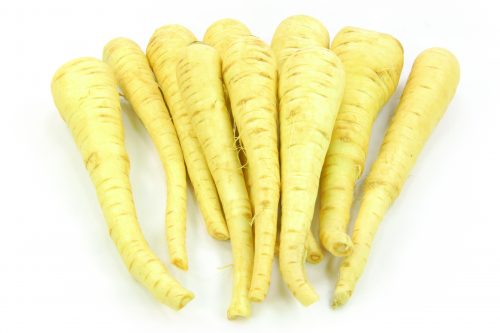
Parsnips have been around since Roman times. While children of the eighties will remember them mashed up with carrots, these days parsnips are making themselves popular in all kinds of dishes, appreciated for their sweet and nutty flavour.
Buying
Look for firm and smooth parsnips. Small to medium-sized are best. Very large parsnips may have quite a tough woody centre.
Storing
Keep parsnips in a plastic bag in the fridge.
Nutrition
Parsnips are a source of fibre, potassium and folate. Fibre helps keep you regular while folate supports a healthy immune system.
Using
If using very young parsnips, don’t worry about peeling. Do peel the older larger ones and slice out the inner core if it looks a bit woody. Parsnips can be boiled, mashed, roasted and stir-fried. Or simply slice and dice then add straight to casseroles, pies, curries, soups and frittatas.
- Mashed parsnip makes a great pie topping. Try on top of cottage pie, sprinkled with a little parmesan cheese.
- Make ‘chips’: roast long parsnip strips and serve among home-baked potato wedges.
- Great in winter soups: try roasting with cauliflower and cumin seeds then purée with sautéed onion and chicken stock. Stir through a spoonful of light crème fraÎche. Season.
- Stir-fry or barbecue thickly sliced parsnip rounds, along with carrots and capsicum then serve over baby spinach with toasted pine nuts.
- Parsnip cake: use parsnips in place of carrots in your favourite recipe.
- For a little nostalgia, try good old-fashioned mashed carrot and parsnips.
Did you know? In medieval times parsnips were thought to cure ailments from toothache to tired feet.
www.healthyfood.com










